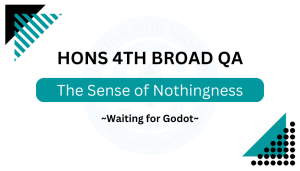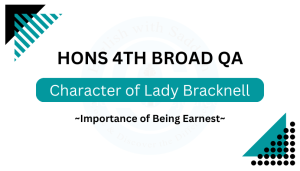Writer’s intro: T.S. Elliot (1888-1965) Thomas Stearns Eliot was a British essayist and the most influential poet in the 20th Century English literature. The poem “The Waste Land” is a superb creation of his literary career. We have made the Waste Land Summary for English literature students in the following content.
Character List of The Waste Land Summary
The Narrator— He is the hardest character to describe in the poem because he takes on many different forms. Sometimes the Narrator seems to be Eliot himself, and sometimes he seems to represent all people.
Madame Sosostris—-A famous mystic mentioned in Aldous Huxley’s book Crome Yellow and who Eliot used in the Tarot card episode. Even though she has a bad cold, she is known as “the wisest woman in Europe.
Stetson—–A friend of the Narrator who fought alongside him in the war. In what war? It’s not clear. It could have been the Punic War, World War I, or neither.
The Rich Lady—-She sits in the beautiful drawing room of “A Game of Chess,” but she is never named. She seems to have a lot of nice things, but she can’t seem to enjoy or appreciate them. She might make a veiled reference to Vivienne, Eliot’s wife.
Philomela-—A person from the book “Metamorphoses” by Ovid. Tereus raped her, and she turned into a nightingale after she got back at him with her sister.
A Typist–– People in the modern world are often lonely. A “young man named Carbuncular” comes to see her and sleeps with her. She is left alone again, with only her mirror and a gramophone to keep her company.
Mr. Eugenides— A business person from Smyrna (now Izmir, in Turkey). Most likely, the one-eyed merchant Madame Sosostris talks about.
Phlebas—–A Phoenician (a language spoken in the Middle East) merchant who is dead in the water in “Death by Water.” Maybe the same Phoenician sailor who drowned that Madame Sosostris is talking about.
Summary.
The Waste Land Summary
Background of Eliot’s Poem—- The poem’s opening, a short piece of writing by the Roman satirist Petronius, is about Sybil, a character from ancient Greek mythology. She was doomed to live forever but not to stay young forever. When asked what she wants, Sybil says, “I want to die,” just like all other prisoners in Eliot’s poem. Eliot’s poem says that dying is the only way out of the Waste Land. The Waste Land gives a prominent picture of hopelessness, and its strong image of urban isolation spoke to a generation of young readers after World War II.
The Waste Land is a poem about breaking down. It’s not about natural land but about the 20th-century European society destroyed by all kinds of illegal and immoral acts, including corrupt physical desires and wishes. Europe was ruined by the bloodshed of the First World War, and the idea of civilization was made fun of. After the war, Eliot’s poem asks, “How can poetry respond to the mess the world has become?” The first edition was published in 1922.
People sleepwalk through their daily lives in The Waste Land. The commuters going to work over London Bridge reminded the poet of groups of tortured souls in hell. After the young typist’s disappointing encounter (physical relationship) with her bad-skin-face lover, she smooths her hair back and puts on a proof. Nothing to see here, nothing gained.
The Burial of the Dead
The name of the book means that death has been laid to rest. More specifically, death is far from the Waste Landers or the Sleeping generation, even though they expect to die because they have broken spiritually or are spiritually barren. April is the month of rebirth and renewal because most of the other months of the year bring Europeans who have lost faith in God, morals, and emotions coldness and inactivity.
Sex is something they do every day and can do whenever they want. So, they wait for April or Spring to come so they can wake up and feel better for the rest of the year. But the Waste Landers say they don’t like April because they don’t want to wake up and start over. They like death or winter. The Landers are always lazy, not doing anything and not going anywhere. They can’t be active, which is what April or Spring gives them. This section shows how the Waste Landers, or modern people who don’t do anything and don’t have a heart, have lost their spiritual and moral values. So they don’t want to see April, Spring, or new life. Instead, they’d rather die.
A Game of Chess
The next part, “A Game of Chess,” shows how people use their minds to try to solve problems they will never be able to solve. The game is played to keep an old woman from paying attention to her son-in-law seducing her daughter-in-law. It means that the Duke is going to rape her son’s wife. Sex is free here, and modern people like it as much as a game of chess. But most of all, it leads to disappointment and failure in married life.
The Fire Sermon
“The Fire Sermon” is a sermon or call from a Buddha to his followers to give up the passion, hatred, and obsession that bring down the Haman civilization. He also says that marriage is the best way to control the intensity of sexual desire, which modern people don’t pay enough attention to. The first picture is of a river. The storyteller sits on the bank and thinks about how bad things are in the world. As Tiresias, he sees a young man jump into bed with a lonely female typist, make love to her aggressively, and then get up and leave. The poem returns to the river, where maidens sing a sad song. One of them is crying because she has lost her innocence to a man who is just as lustful as she is.
Death by Water
“Death by Water,” the fourth part of “The Waste Lands,” shows how the Waste Landers accept being demoralized and doing things that aren’t honest, rejecting moral values. Modern men follow the path of uncontrolled pleasure and wealth, but this path leads to destruction and decay. A dead Phoenician in the water is in a similar situation. He had a lot of money and property, but he didn’t care about anything moral or spiritual. He spent his whole life trying to get rich and satisfy his senses. Ultimately, he drowned before he could be born again in this evil Waste Land.
What the Thunder Said
In “What the Thunder Said,” the fifth and final section of “The Waste Lands,” the Waste Landers or the Sleeping Modern Demoralized people get a message or a solution to help them wake up and start over. The person telling the story begs for rain, and it finally comes. The thunder that goes with it is mentioned in three sayings from the Brihadaranyaka Upanishad: “Datta, daydream, damyata,” which means “to give, to sympathize, and to control.” Elliot says that blessings or moral growth are possible, even though civilization is falling apart (“London Bridge is falling, falling, falling”). But no one knows if the people of the Waste Land will listen to what the Thunder says.













